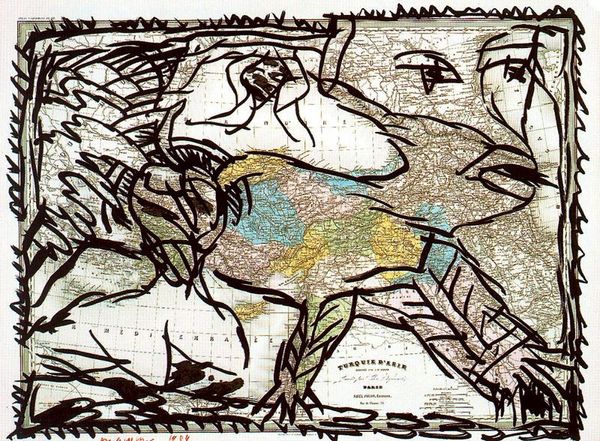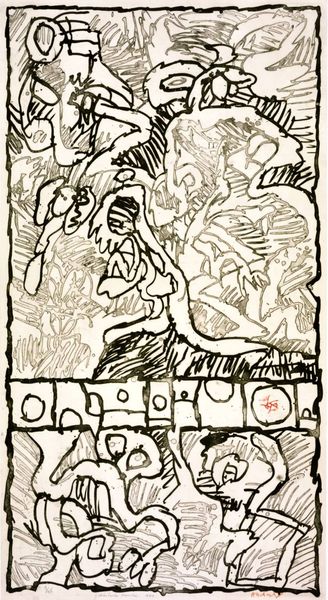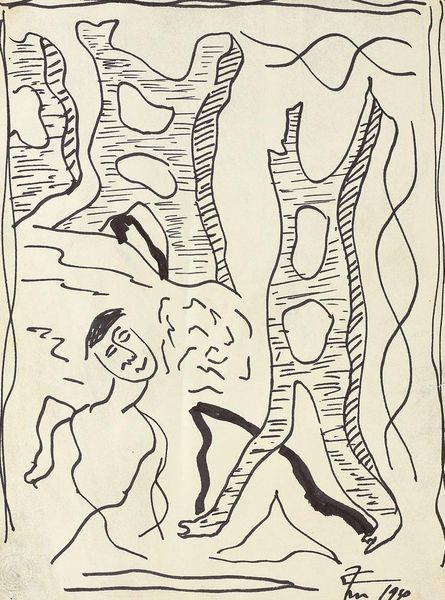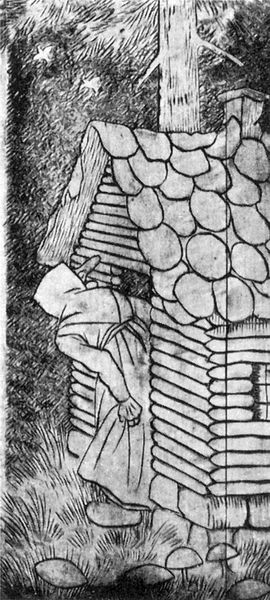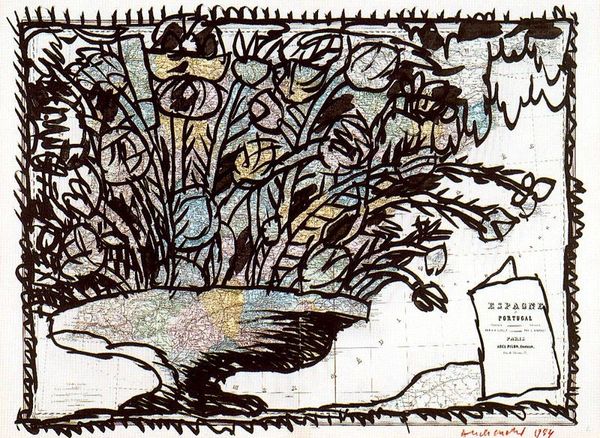
drawing, mixed-media, paper, ink
#
drawing
#
mixed-media
#
pen illustration
#
figuration
#
paper
#
ink line art
#
ink
#
line
Copyright: Pierre Alechinsky,Fair Use
Editor: This mixed media drawing by Pierre Alechinsky is called "Page of the universal atlas, VII. Empire of Alexander," and it seems to combine ink and possibly some watercolor on a map. It's quite striking, how the stark black lines contrast with the faded colours of the map. How do you interpret this combination of materials? Curator: Well, first, observe how the map is itself a manufactured object, representing colonial claims. Alechinsky, by overlaying his bold, almost frenetic ink drawings, directly confronts this. It's not simply about aesthetic contrast, but a tension between imposed order—the map—and expressive, almost chaotic, artistic gesture. What kind of labour goes into mapping, into claiming territories? What labour went into Alechinsky's marks? Editor: That makes sense. The map seems like a symbol of power structures, and the drawing almost rebels against it. But I wonder, is he criticizing the very *act* of creation or instead proposing something new? Curator: Precisely. Think about the materiality of ink, a substance historically used for documentation and control. Now, Alechinsky uses it not to record "facts," but to create ambiguous figures, destabilizing the map's authority. He subverts its intended use and turns the "Empire" into a playground of lines, of movement, a new field for the materialization of the artwork. It challenges the commodification of knowledge inherent in mass-produced maps. Does he make you consider other ways maps have been used? Editor: I see what you mean. The use of something as functional and widespread as a map transforms its significance, as if giving a new voice to silenced or dominated populations. So it’s the artist bringing the production process into light? Curator: Exactly! We consider the act of *making*, rather than the illusion created by a polished artwork alone. What sort of world do the labour and production practices propose? What's the world born out of this assembly of ink, paper, drawing, and old maps? Editor: I had never considered a map's role beyond navigation. This really brings attention to how art can deconstruct and repurpose existing objects and the messages they inherently carry. Curator: It shows us how examining materials and processes unveils the socio-political undertones of even seemingly mundane objects. Art is not only about beautiful imagery, but about production and making as well.
Comments
No comments
Be the first to comment and join the conversation on the ultimate creative platform.
